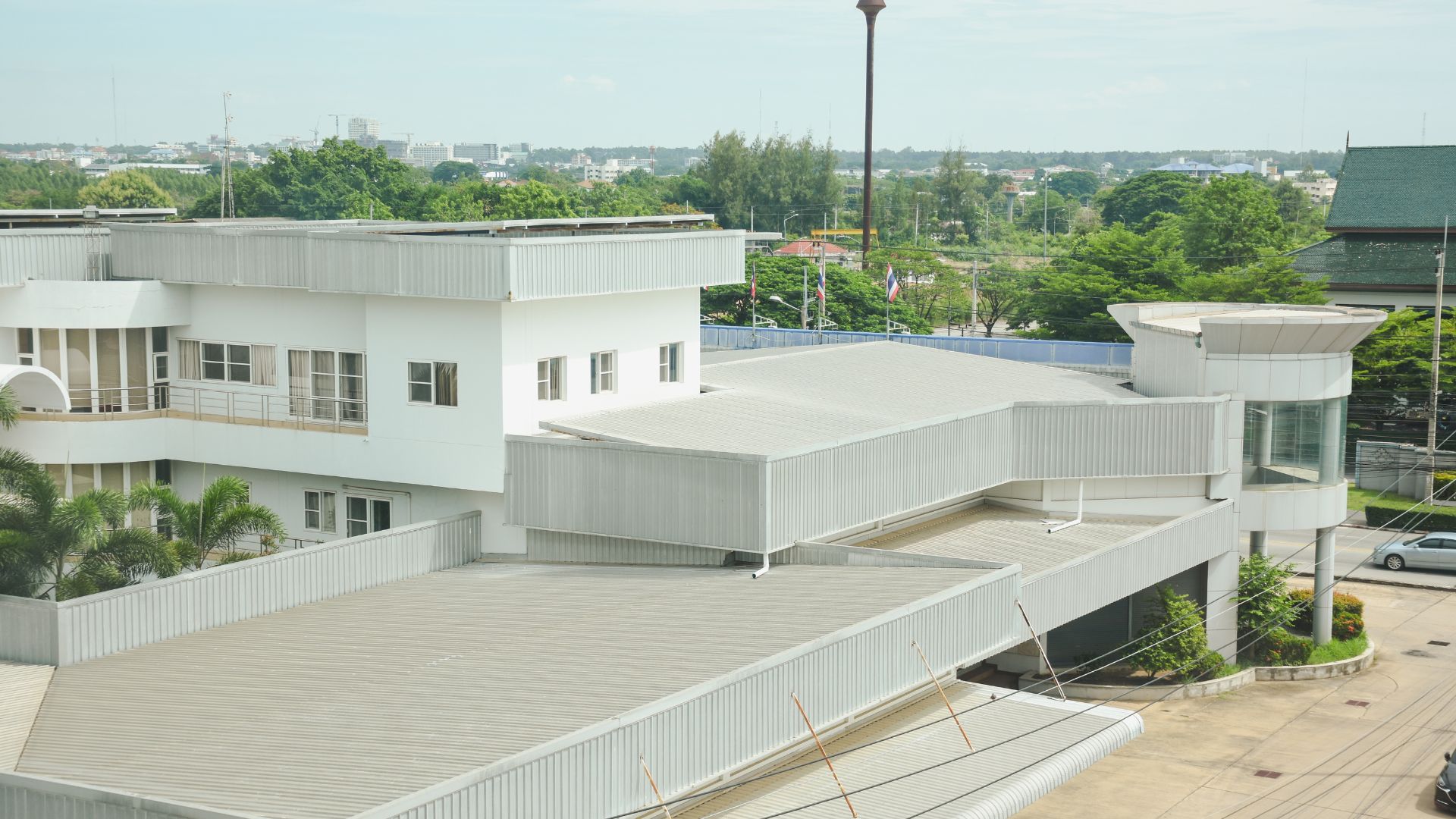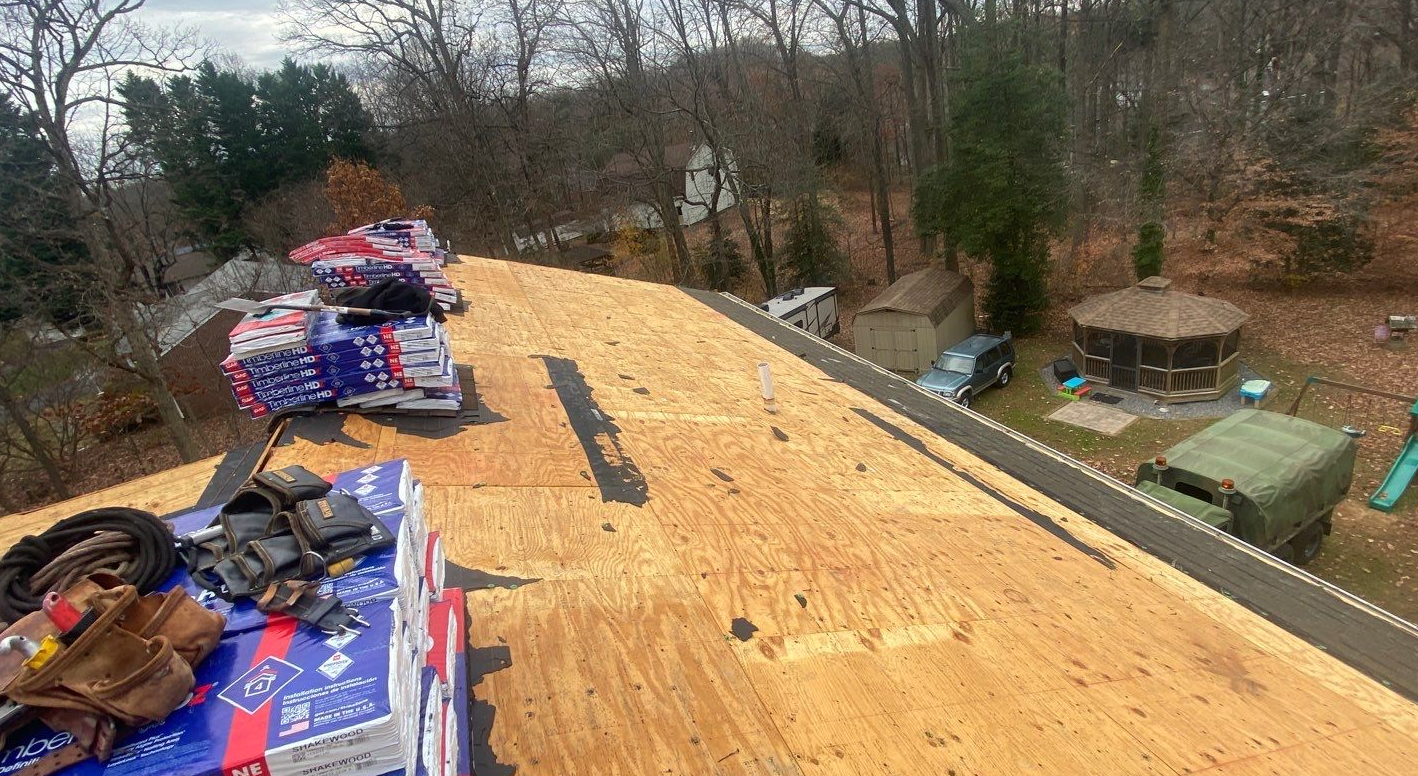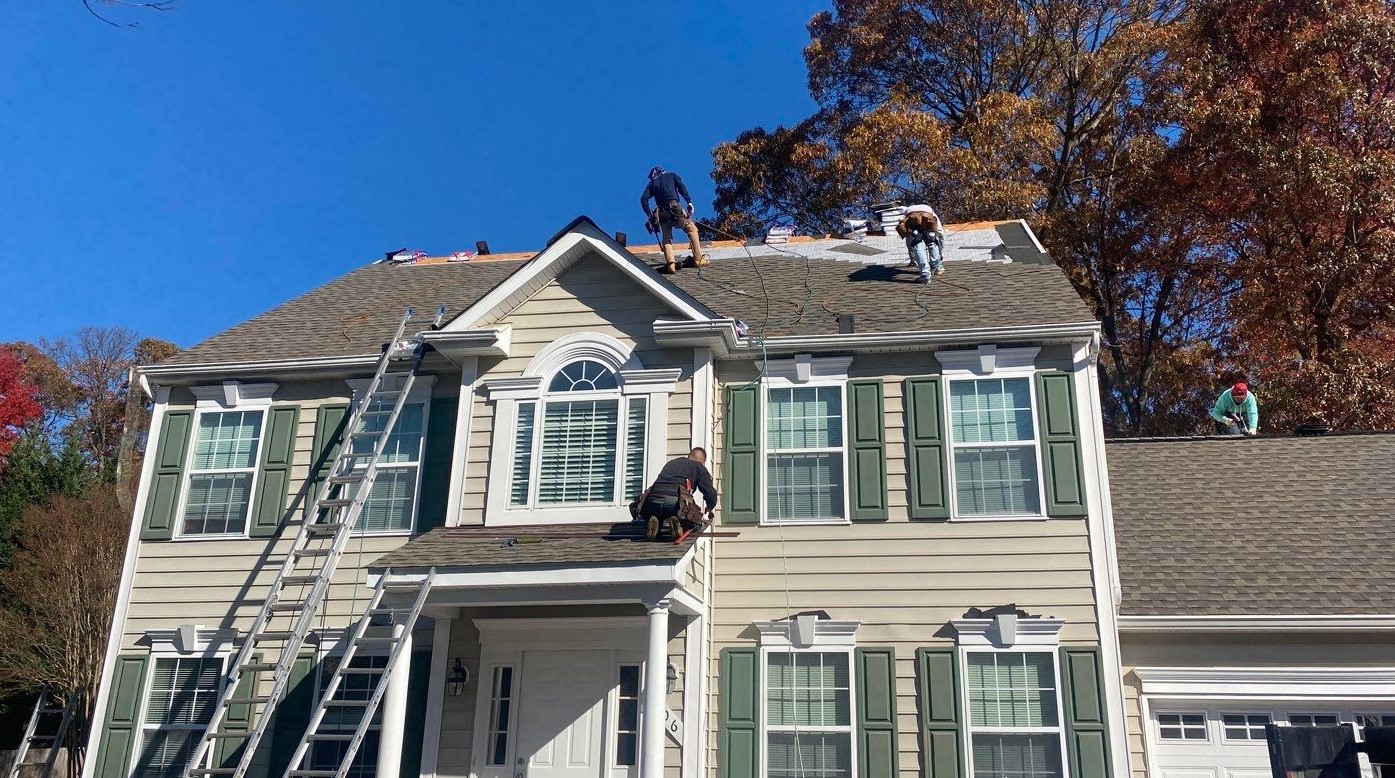When you hear the word “snow,” your first thought is likely the light, airy flakes that fall during a snowstorm. However, too much snow can get heavy fast: depending on its water content, packed snow can weigh as much as 30 pounds per cubic foot!
That’s why it’s crucial to know how to handle snow on the roof, especially given the average snowfall here in Maryland. Inspecting, maintaining, and protecting your roof gives you the best chance of passing through the winter without significant damage or costly repairs.
Here’s what to know about keeping your home safe from heavy snow.
How to Protect a Roof From Snow
Ideally, you’ll prepare your roof for snow before the start of winter. There are a few tasks to add to your checklist:
Clean Your Roof and Gutters
You should clean your gutters at least twice a year. One of these times should be in late fall/early winter. Removing debris from your roof and gutters makes snow less likely to build on your roof.
Check Your Attic Insulation and Ventilation
Proper insulation and ventilation can help protect your roof during the winter while preventing ice dams from forming. It also makes your home more energy efficient.
Do a quick audit of your attic or have a professional come take a look. Fix, replace, or install more insulation and ventilation as needed.
Get a Professional Inspection
You should have a professional roofing technician inspect your roof at least once per year. A good time to do this is in the fall, as heavy snow presents one of the most significant annual threats to your roofing system.
Your technician will inspect your roof and attic for any signs of wear and tear, insulation issues, growing leaks, and other potential problems.
Make Repairs
If you’re looking at damaged flashing or wear and tear, don’t wait until spring to fix it! Have a professional make repairs right away to strengthen your roof against the coming snow.
Consider Heating Cables
Though heating cables aren’t necessary to keep snow at bay, they’re one of the most effective ways to prevent it from building. Installing heating cables on your roof warms the surface enough to prevent ice dams from forming. In addition, they can last several years, depending on how often you use them.
Signs of Too Much Snow
Once winter arrives, be vigilant. You’ll want to keep an eye and ear out for signs that there’s too much snow for your roof to handle.
Looking at the snow from the ground won’t always tell you when there’s too much for your roof, as more snow doesn’t always mean heavier. Instead, the total weight is what matters: six inches of wet snow is the same weight as 38 inches of dry snow!
If you start hearing unusual creaking sounds from your ceilings, this might mean that the beams of your roof are straining under the snow’s weight. If these elements take damage, the structure of your roof may be at risk.
Cracks and sagging along the ceilings, walls, and masonry of your home are also red flags. These are often signs that the pressure of the snow has caused damage to your home.
Leaking is a bad sign any time of the year, but it’s even more dangerous after a period of heavy snow. A roof covered in too much snow may start to buckle or bend. As the snow starts to melt, it may drain into your attic.
Last, but not least, be on the lookout for any doors or windows that suddenly become difficult to open or close. This can be a sign that the frames have warped under pressure from the snow.
How to Remove Snow on the Roof
To prevent damage, it’s a good idea to periodically remove snow from your roof, especially after a heavy storm.
DIY Snow Removal
You can tackle snow removal on your own, but make sure to take safety precautions.
Don’t climb onto your roof, as slippery shingles can become a serious hazard. Avoid even using a ladder, which may become icy or slippery. Wait until the worst of the weather has passed before you head outside to clear your roof.
Using a quality roof rake, remove snow from your roof at a safe distance. Be careful not to knock the rake against your shingles, which can cause damage. Instead, leave an inch or so of snow on the roof to avoid making contact.
Ice Dam Removal
When the snow on your roof has formed an ice dam, it’s crucial to get rid of it fast. One of the easiest methods is to spray your roof using a specialized garden hose nozzle that heats water. Keep in mind that this fix is temporary, and you’ll have to keep spraying your roof this way until you’ve fixed the underlying issues that caused the ice dam.
Chemical products are another good bet for preventing roof snow damage. You’ll have to be careful when using this process, especially because it can harm your landscaping. Always follow the product instructions, and keep in mind that you may need more than one application.
Specialist Snow Removal
If you’re concerned about the state of your roof or you can’t reach the snow even with a roof rake, call a pro. Roof snow removal services are the safest and fastest way to clean off your roof.
On average, you can expect your roof snow removal cost to hover between $200-$500, depending on the size of your home.
Call Landmark Roofing for Protection
Winter is tough on Maryland roofs, but a bit of forethought and preparation can keep your home protected through the worst storms. To keep the snow at bay, give your roof some TLC by following the best practices above.
If the worst should happen, don’t deal with snow on the roof alone: call a pro! At Landmark Roofing, we’re proud to offer expert inspections and fast repairs for roof snow damage throughout the area. Get your free roof inspection today by calling (443) 223-7453 or contacting us online.
Snow On The Roof (FAQs)
What risks does heavy snow on the roof pose?
Heavy snow on the roof can lead to structural damage due to its weight and potential water damage as it melts.
How much snow on the roof is too much?
The danger level depends on the snow type; wet snow is heavier. Consult a professional if there’s more than a foot of snow on the roof.
Can ice dams from snow on the roof cause leaks?
Yes, ice dams formed from melting snow on the roof can block water drainage, leading to leaks.
What’s the best way to remove snow from the roof?
Use a roof rake from the ground or hire a professional for safe removal.
Should I inspect my roof for damage after heavy snow?
Definitely. After heavy snow on the roof, it’s wise to check for damages or leaks.
How often should gutters be cleaned to prevent snow issues on the roof?
Clean gutters at least twice a year to prevent snow and ice buildup on the roof.
Are heating cables effective for managing snow on the roof?
Yes, heating cables can prevent ice dams by melting snow on the roof.
What should I do if I hear creaking sounds from snow on the roof?
Creaking may indicate excessive weight from snow on the roof. It’s best to consult a professional.
Contact Us
After starting his first business at age 26, Artie Hendricks partnered with his best friend Rob Calhan and they have assembled a team of skilled and conscientious friends to be the core of Landmark Roofing. He largely credits his father’s strong and consistent work ethic and his father’s best friend Jerry, who owns a construction company and trained him through his first building experiences. Artie has since advanced through degrees in architecture, auto-CAD and construction management to build a business that prides itself on the care it shows for its work and its customers’ satisfaction.






